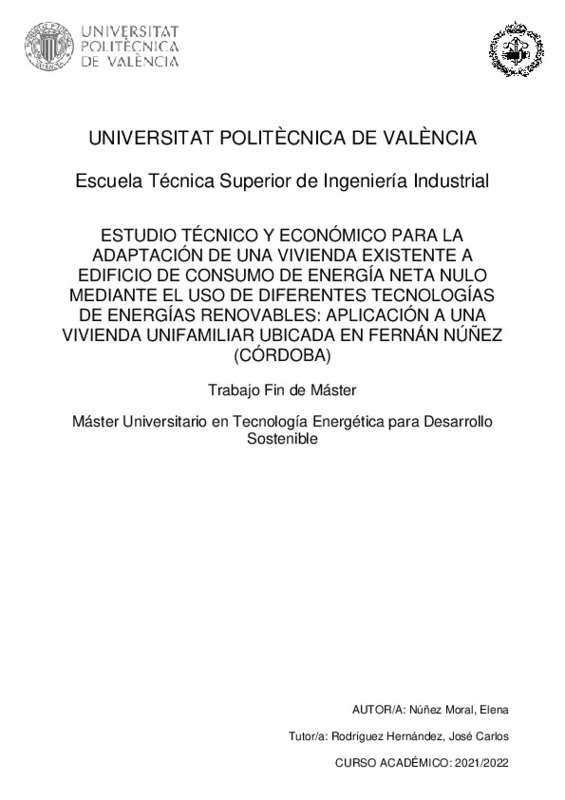

Estudio técnico y económico para la adaptación de una vivienda existente a edificio de consumo de energía neta nulo mediante el uso de diferentes tecnologías de energías renovables: aplicación a una vivienda familiar ubicada en Fernán Núñez (Córdoba)
RiuNet: Repositorio Institucional de la Universidad Politécnica de Valencia
JavaScript is disabled for your browser. Some features of this site may not work without it.
Buscar en RiuNet
Listar
Mi cuenta
Estadísticas
Ayuda RiuNet
Admin. UPV
Estudio técnico y económico para la adaptación de una vivienda existente a edificio de consumo de energía neta nulo mediante el uso de diferentes tecnologías de energías renovables: aplicación a una vivienda familiar ubicada en Fernán Núñez (Córdoba)
Mostrar el registro completo del ítem
Núñez Moral, E. (2022). Estudio técnico y económico para la adaptación de una vivienda existente a edificio de consumo de energía neta nulo mediante el uso de diferentes tecnologías de energías renovables: aplicación a una vivienda familiar ubicada en Fernán Núñez (Córdoba). Universitat Politècnica de València. http://hdl.handle.net/10251/187456
Por favor, use este identificador para citar o enlazar este ítem: http://hdl.handle.net/10251/187456
Ficheros en el ítem
Metadatos del ítem
| Título: | Estudio técnico y económico para la adaptación de una vivienda existente a edificio de consumo de energía neta nulo mediante el uso de diferentes tecnologías de energías renovables: aplicación a una vivienda familiar ubicada en Fernán Núñez (Córdoba) | |||
| Otro titulo: |
|
|||
| Autor: | Núñez Moral, Elena | |||
| Director(es): | ||||
| Entidad UPV: |
|
|||
| Fecha acto/lectura: |
|
|||
| Resumen: |
[ES] En este Trabajo Fin de Máster (TFM) se realizará un estudio que contemple la rehabilitación energética de una vivienda unifamiliar ubicada en Fernán Núñez (Córdoba) con el ánimo de pueda ser clasificado como edificio ...[+]
[EN] In this Master's Thesis (TFM) a study will be carried out that contemplates the energy rehabilitation of a single-family house located in Fernán Núñez (Córdoba) with the aim of being classified as a zero net energy ...[+]
|
|||
| Palabras clave: |
|
|||
| Derechos de uso: | Reserva de todos los derechos | |||
| Editorial: |
|
|||
| Titulación: |
|
|||
| Tipo: |
|
recommendations
Este ítem aparece en la(s) siguiente(s) colección(ones)
-
ETSII - Trabajos académicos [10404]
Escuela Técnica Superior de Ingenieros Industriales






